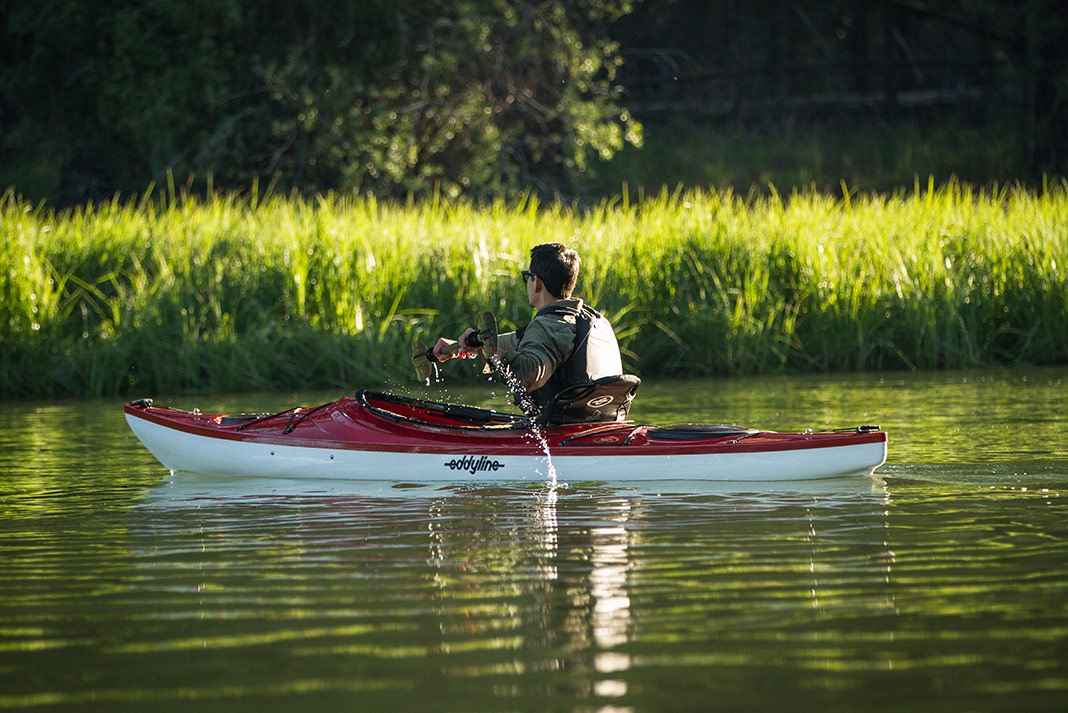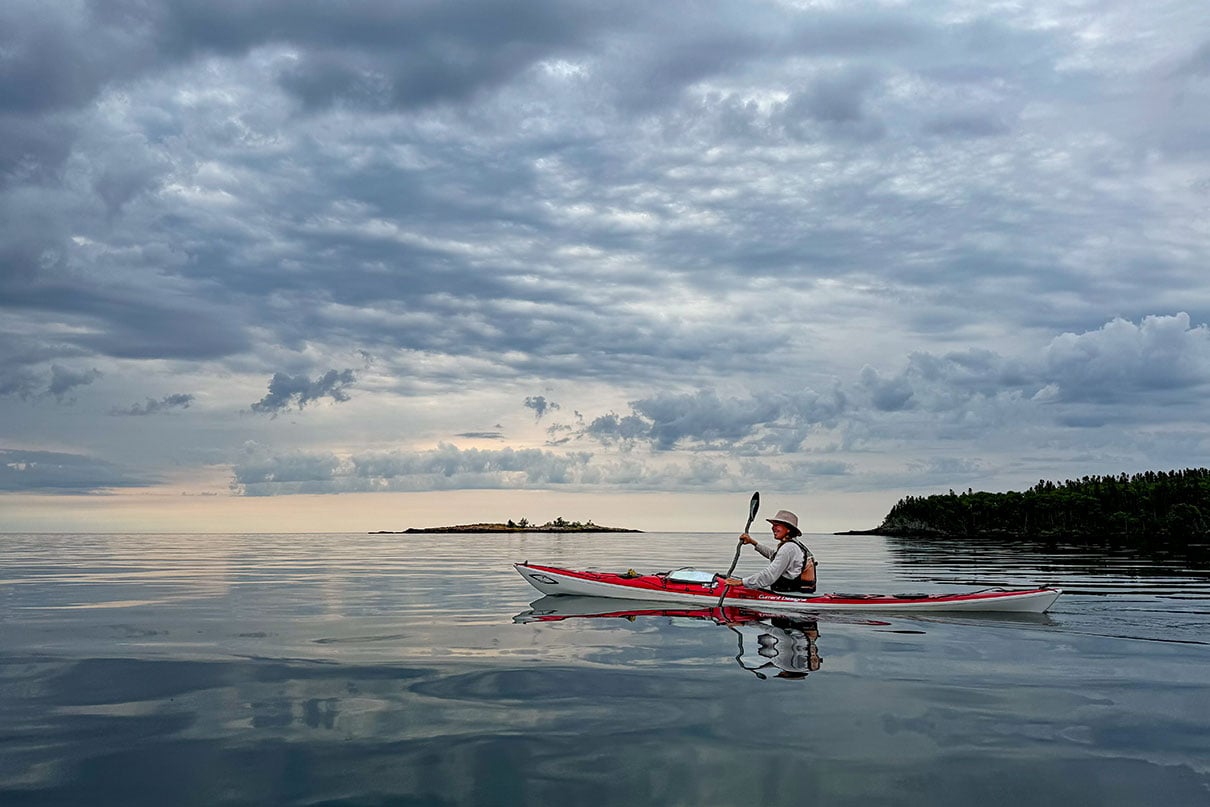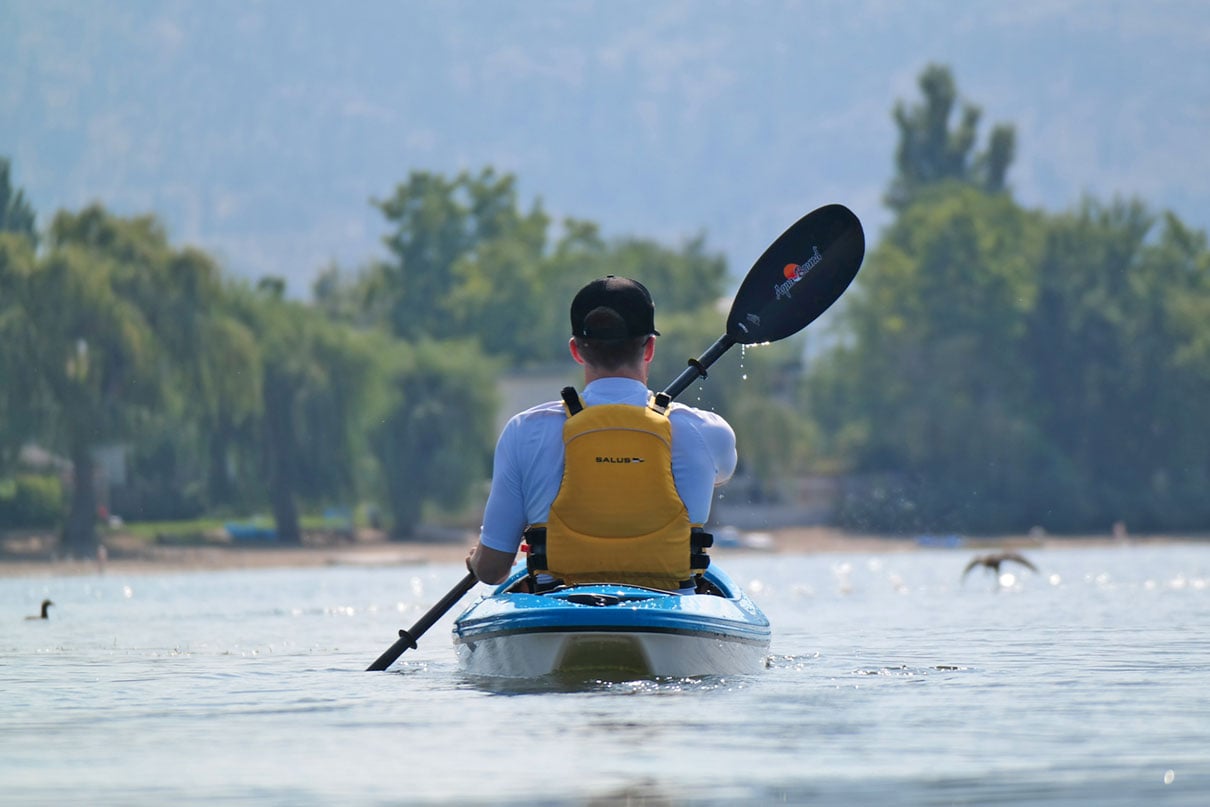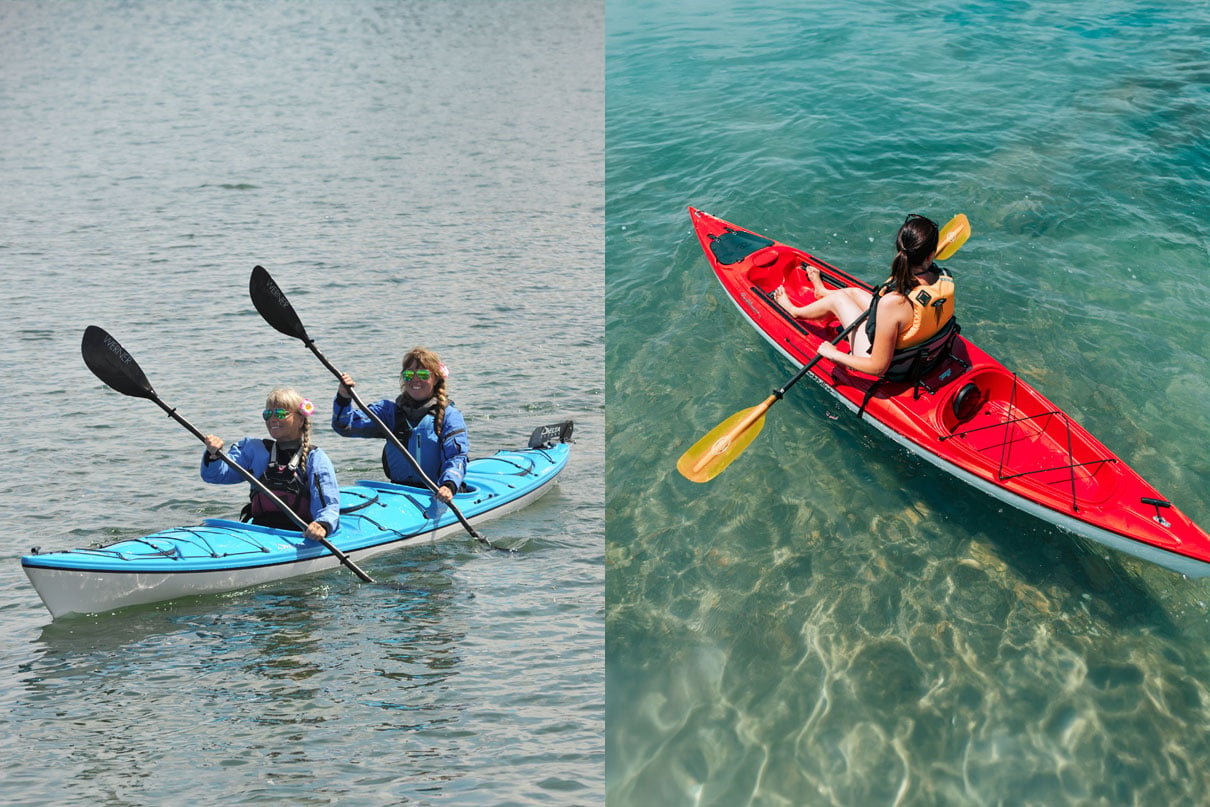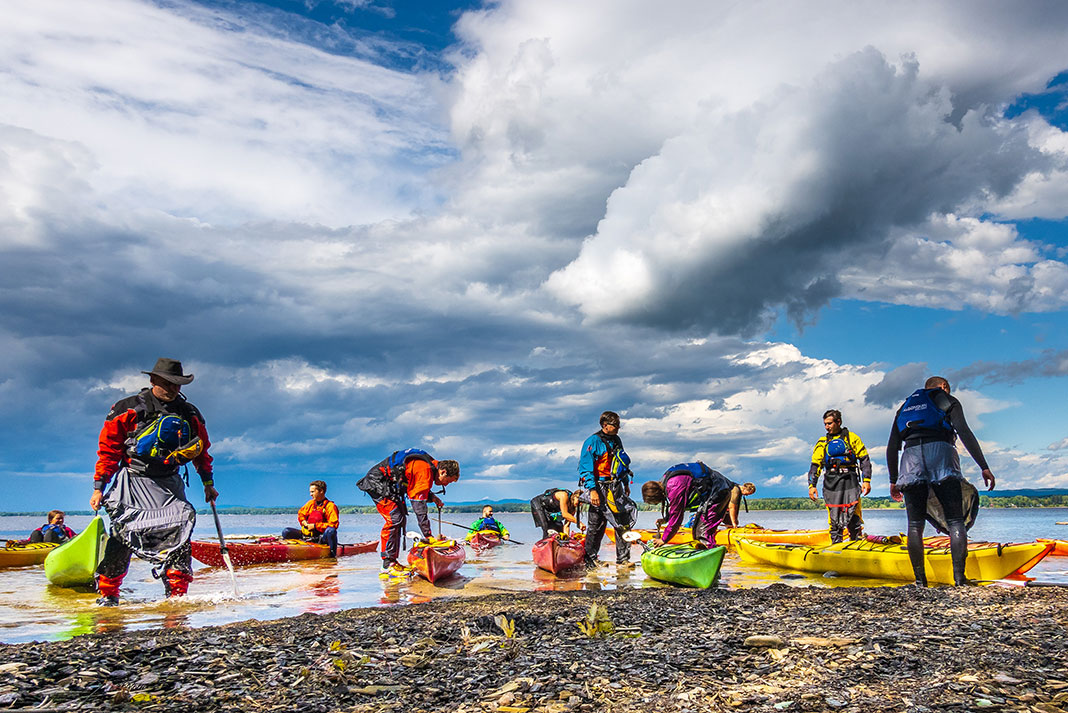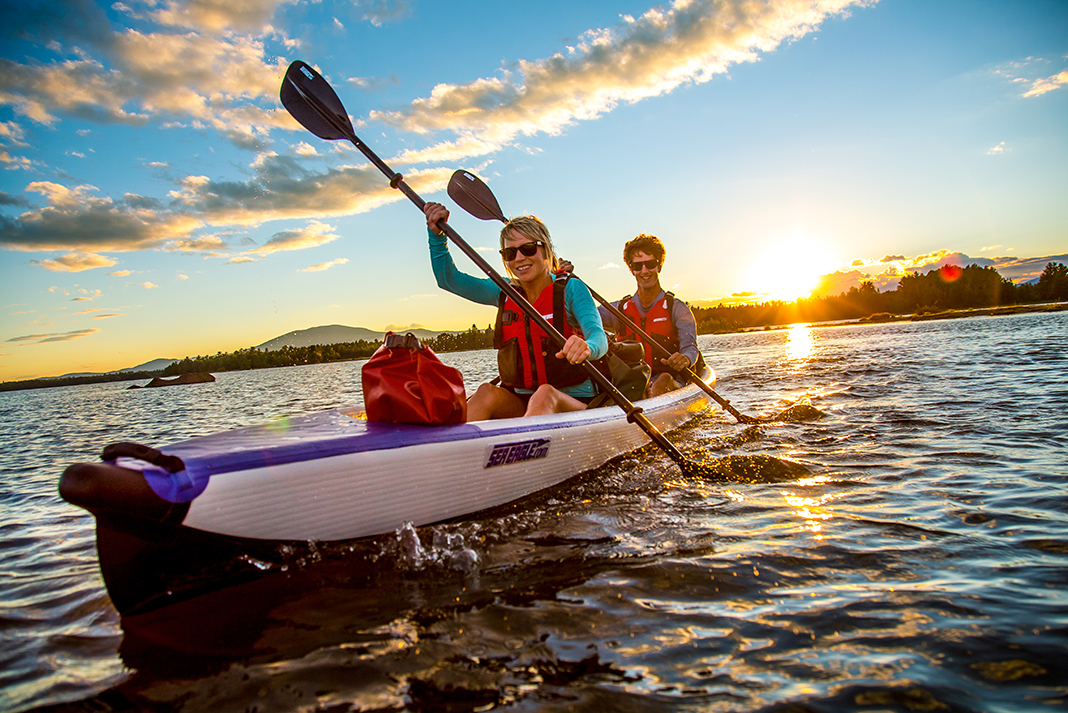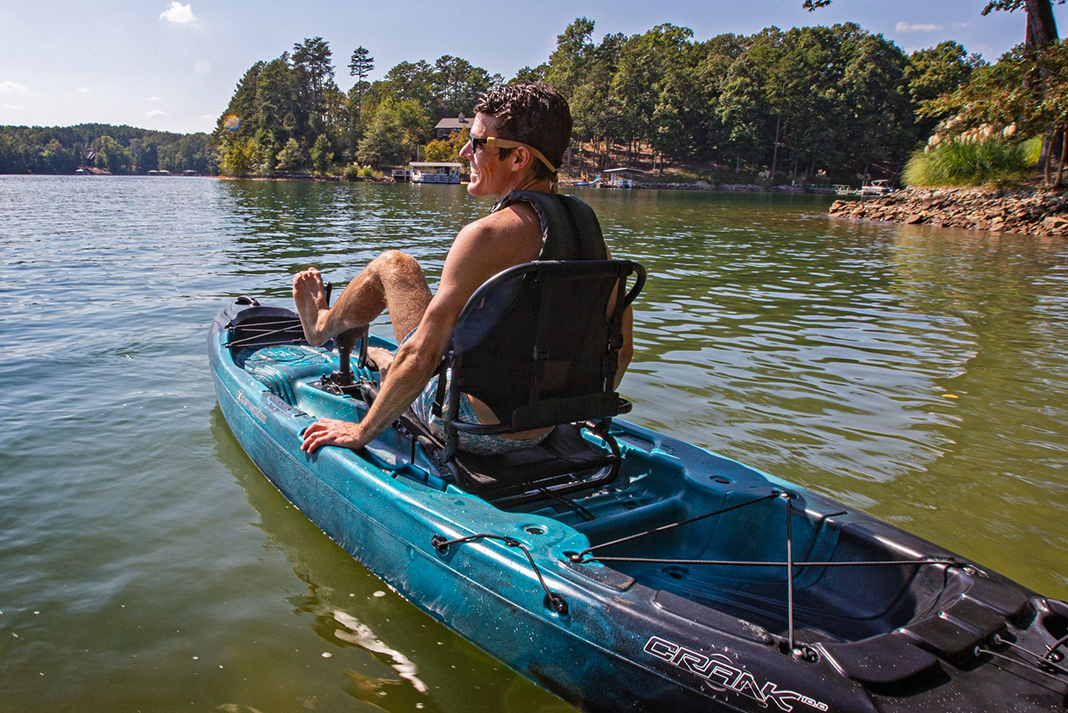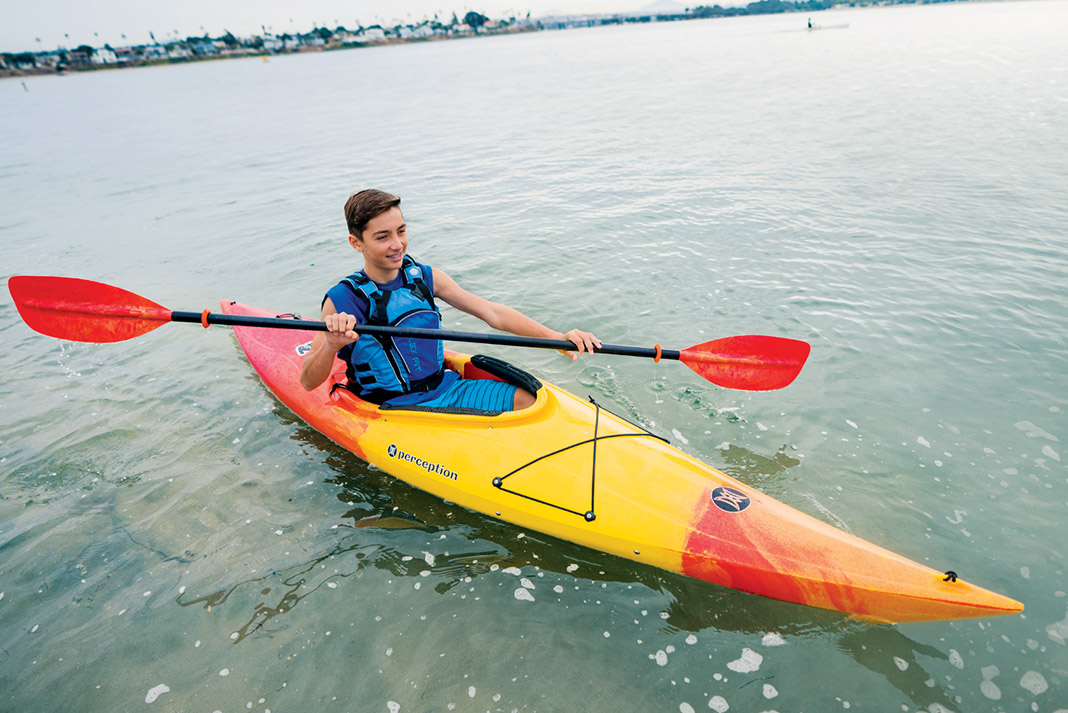If you’re looking for a new kayak, you may have encountered a common scenario: you head to the paddle shop to grab a boat, only to find there are a dozen different options. Why is one enclosed, while another has an open-concept seating area? Is the short or long one better to paddle across the lake?
There are so many different types of kayaks that it can feel like a journey to decide on one. Even experienced paddlers weigh options when seeking their next boat as we become more specialized in our activities. This is because the differences in materials, design, number of seats, intended use and means of propulsion all tailor your boating experience. Understanding these differences will help you buy the best kayak for your goals, budget and aspirations.
How to choose the right kayak for you
Think of picking a kayak like following a flow chart, or, better yet, a choose-your-own-adventure story. Start with your experience level and the type of kayaking you’d like to do. From here, factor in your budget and any specific circumstances related to your paddling.
For example, if you’re a new paddler learning how to kayak, and you’re looking to stick close to shore while covering a few miles or float slow stretches of river, a recreational kayak could be a good choice. You can weigh the pros and cons of a sit-inside kayak versus a sit-on-top. Your budget will help determine what materials will be accessible to you, as well as the craftsmanship and features the kayak incorporates. For a reasonable price these days, you can buy a plastic recreational kayak that gets you on the water, and, by budgeting a little more, you can find a design with a stronger plastic construction, more comfortable seat, and helpful safety features should you capsize.
Now, let’s say you have some kayaking experience, live in a small apartment with limited storage, and the boat ramp on the bay is just a short walk away. Going through these thoughts, a folding, touring kayak that can be tucked away almost anywhere may be the choice.
To guide you in the possibilities available, here’s a comprehensive resource on every kayak type to choose from.
Types of kayaks explained
Kayaks for different activities
The bodies of water and how you plan to paddle them play perhaps the largest part in what kind of kayak to choose.
Recreational kayaks
Recreational kayaks are about fun, stability and value. Whether they are sit-inside or sit-on-top, recreational designs put a premium on stability. They aren’t as fast as touring kayaks, but they are more stable. All of this is to say they make a good learning kayak.
Recreational kayaks often offer very basic features and come at an affordable price. In some cases they are just a simple kayak hull with a seat and little else. Nicer designs incorporate some touring kayak features, like hatches and bulkheads for storage and safety.
Like all kayaks, recreational kayaks come in a wide range of lengths and designs. Few are shorter than nine feet and most are no longer than 14 feet. All are wider than touring designs of similar length, which provides more stability but will not be as effective at covering ground or countering wind and current.
If you’re considering a recreational kayak, take a look at designs around 12 feet long first. Boats shorter than this are lighter and less expensive, but noticeably slower. Those longer are faster but heavier. Longer recreational boats are a good choice for covering lots of miles.
The best recreational kayaks for paddling far from shore are sit-on-top designs that will allow you to remount should you capsize. Sit-inside recreational kayaks are great for anyone who paddles close to shore and seeks to not have their lower half exposed to weather and splashing water.
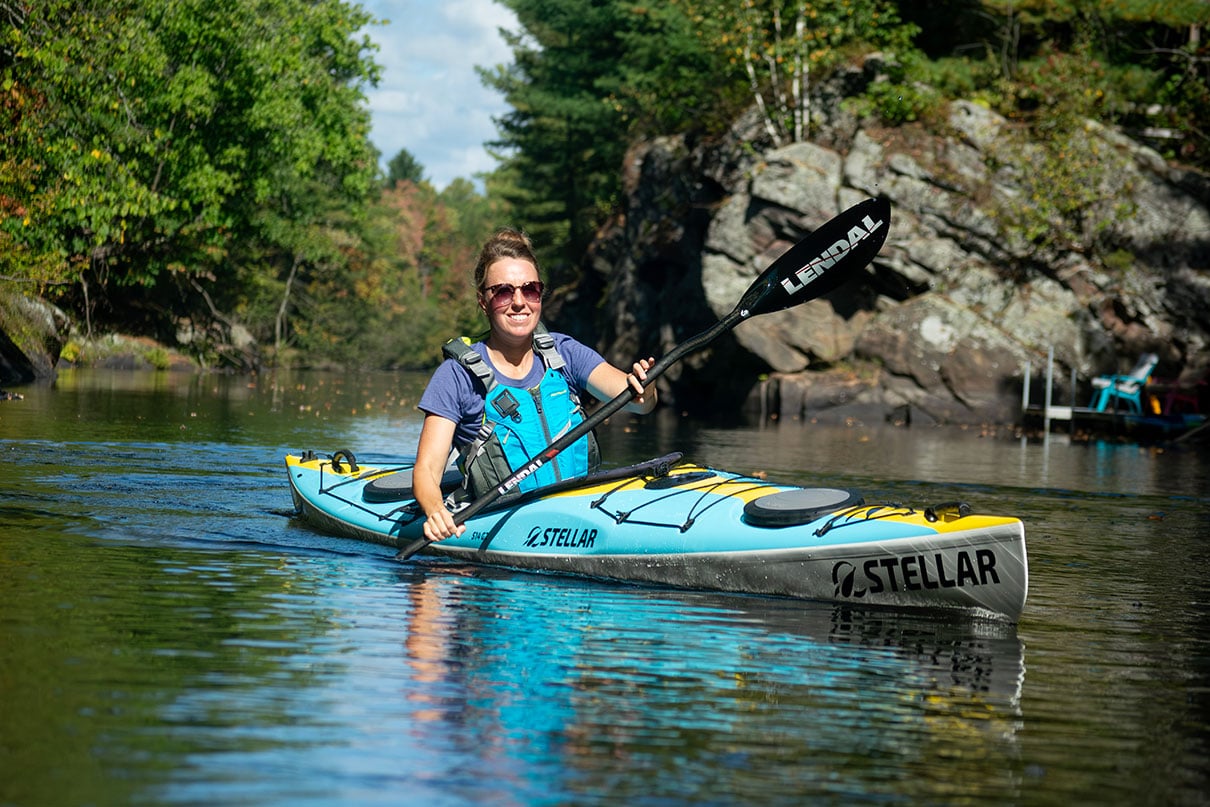
Touring and sea kayaks
Touring kayaks are specialized sit-inside kayaks designed for long-distance travel, camping, and open waters. Sea kayaks are a more specialized set of touring kayaks that are typically longer and narrower than general-purpose touring boats.
Touring kayaks typically pick up where recreational kayaks leave off. They are usually longer than 14 feet and narrower than 24 inches. Most touring kayaks are fitted with bulkheads and hatches front and rear for dry storage and floatation. Many have rudders or retractable skegs to help control direction in wind. Safety features like decklines are common.
Sea kayaks are similar to general-purpose touring kayaks in many ways. They are usually 16 feet long or longer and commonly 22 inches wide or narrower. Sea kayaks are faster than other touring kayaks but usually not as stable. They almost always feature as skeg or rudder and often have extra compartments and hatches that allow easy access to equipment while on the water.
Most touring kayaks are made of rotomolded polyethylene. Many sea kayaks are made of lighter, stiffer composite materials like fiberglass or aramid fibers. Generally, these composite kayaks offer better performance than their PE cousins but cost substantially more.
If you’re interested in paddling larger bodies of water like the ocean or the Great Lakes, touring kayaks are a good choice. Especially if you plan to do multiple-day trips involving camping.
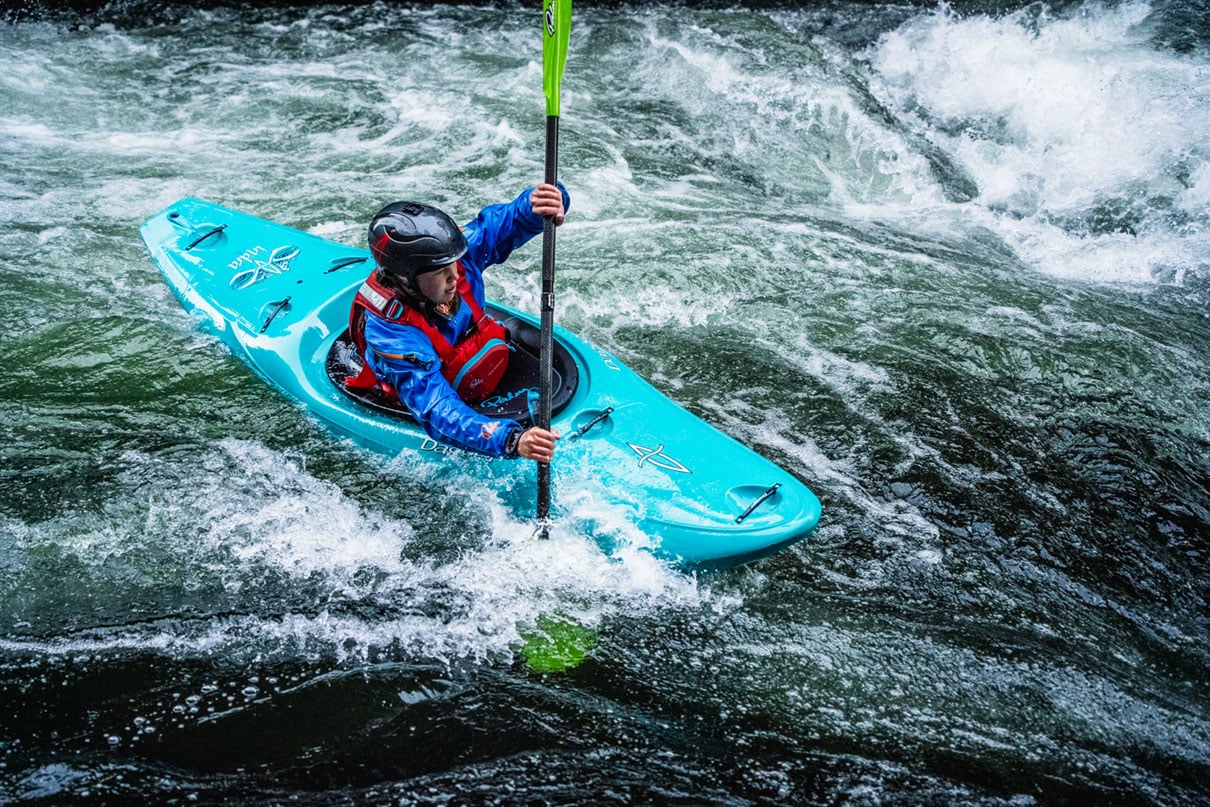
Whitewater kayaks
Whitewater kayaks are specialized designs for running river rapids. Most whitewater kayaks are sit-inside designs with smaller cockpits that can be sealed tightly with a neoprene sprayskirt. Some sit-on-top designs offer hard-shell kayak performance to those who prefer to sit on instead of inside their kayak.
Whitewater kayaks are typically shorter than touring or recreational kayaks. They are the most maneuverable kayaks and often have hull shapes that plane on a wave like a surfboard. Once you get into whitewater kayaking you’ll discover there is a whole new set of kayak types you can choose from, including river runners, freestyle kayaks, and even crossover kayaks that blend whitewater and touring.
For top picks of various whitewater kayak styles, you can read Paddling Magazine’s guide to the best whitewater kayaks.
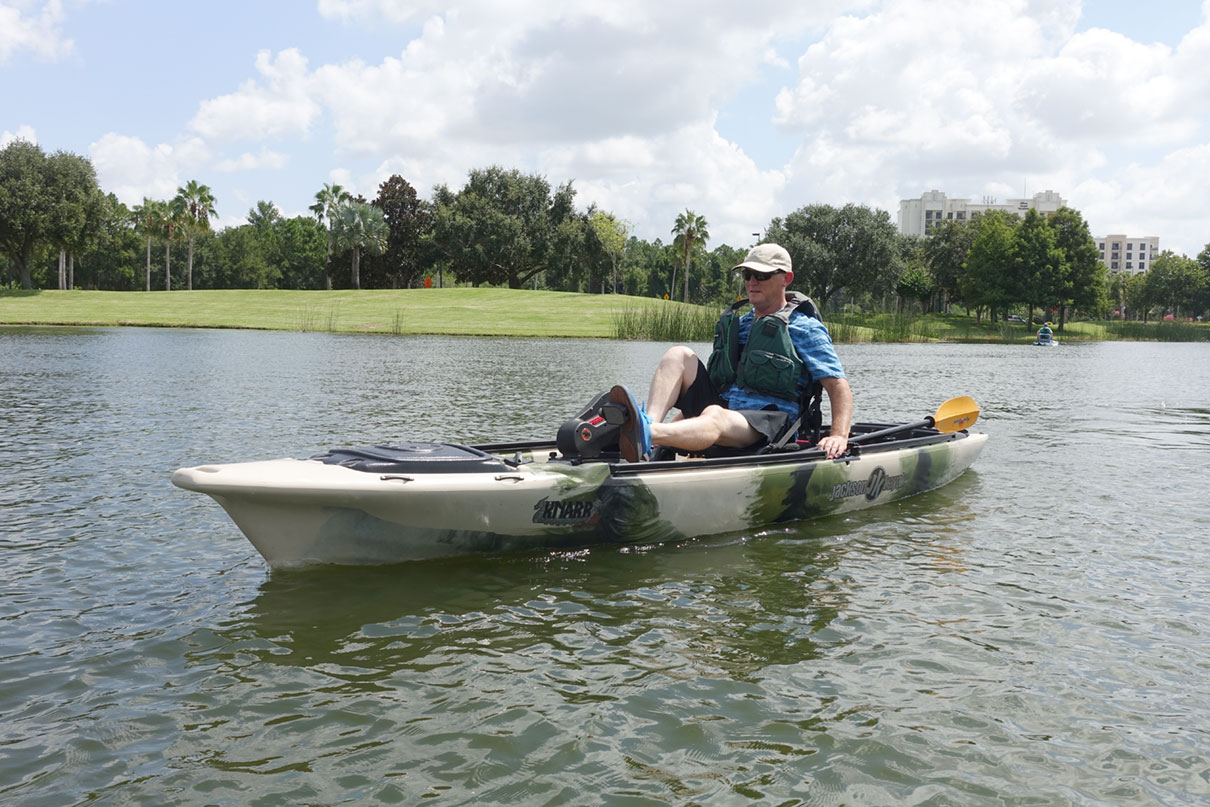
Fishing kayaks
Fishing kayaks or angler kayaks are specialized recreational designs. Most fishing kayaks are sit-on-top designs. These allow for good mobility, ease of landing fish and safety when far from shore.
Some fishing kayaks are wide enough for standing. These designs are typically slower than narrower boats, but their wider beam provides ample stability. An added benefit of wider designs is that seats can be mounted higher for more effective vision and casting.
Pedal-drive fishing kayaks are popular, especially in tidal or river environments where strong currents can make paddling challenging. There are a variety of types of pedal kayaks, including those with fins and others with propellers. All allow a kayak angler to keep his or her hands free for casting and handling fish.
In colder climates, some kayak anglers prefer closed cockpit designs. These kayaks are a little more difficult to get into and out of, but offer more protection from cold water and air temperatures.
Surf kayaks
Surf kayaks are specialized kayaks for playing in ocean surf. They differ from whitewater kayaks because they have a specialized edge that grips a breaking wave and allows for a diagonal run like a surfboard would make.
Sit-inside surf kayaks come in two types. High-performance or HP boats are short and have a flat planing hull like a surfboard. Longer International Class (IC) boats have a rounder hull and are typically longer. Either may be fitted with surfboard fins, but it is more common to find fins on HP boats.
A specialized kind of sit-on-top surf kayak is called a wave ski. This is essentially a surfboard with a raised seat and a seatbelt to keep the paddler in place. Wave skis are similar to HP boats in their length and width. A few other sit-on-top surf kayaks are also available for beginners who are just getting into the sport.
Racing kayaks
There are lots of different kinds of racing kayaks. There are whitewater racing kayaks, whitewater slalom kayaks, downriver racing kayak, racing surf skis and flatwater sprint kayaks. There are also long, fast sea kayaks that are used for certain categories of kayak racing.
People buy racing kayaks either to compete in a particular discipline or because they like the speed and performance of a certain design. Many fitness paddlers choose racing kayaks as the right tool for training on the water.
If you’re considering competition, it’s probably best to explore the community around your chosen discipline before jumping in and buying a racing kayak. Other racers and coaches will have lots of recommendations for where to start and what to look for.
Types of kayaks by design
No matter which branch of paddling you want to pursue, you’ll choose between a sit-on-top or sit-inside kayak.
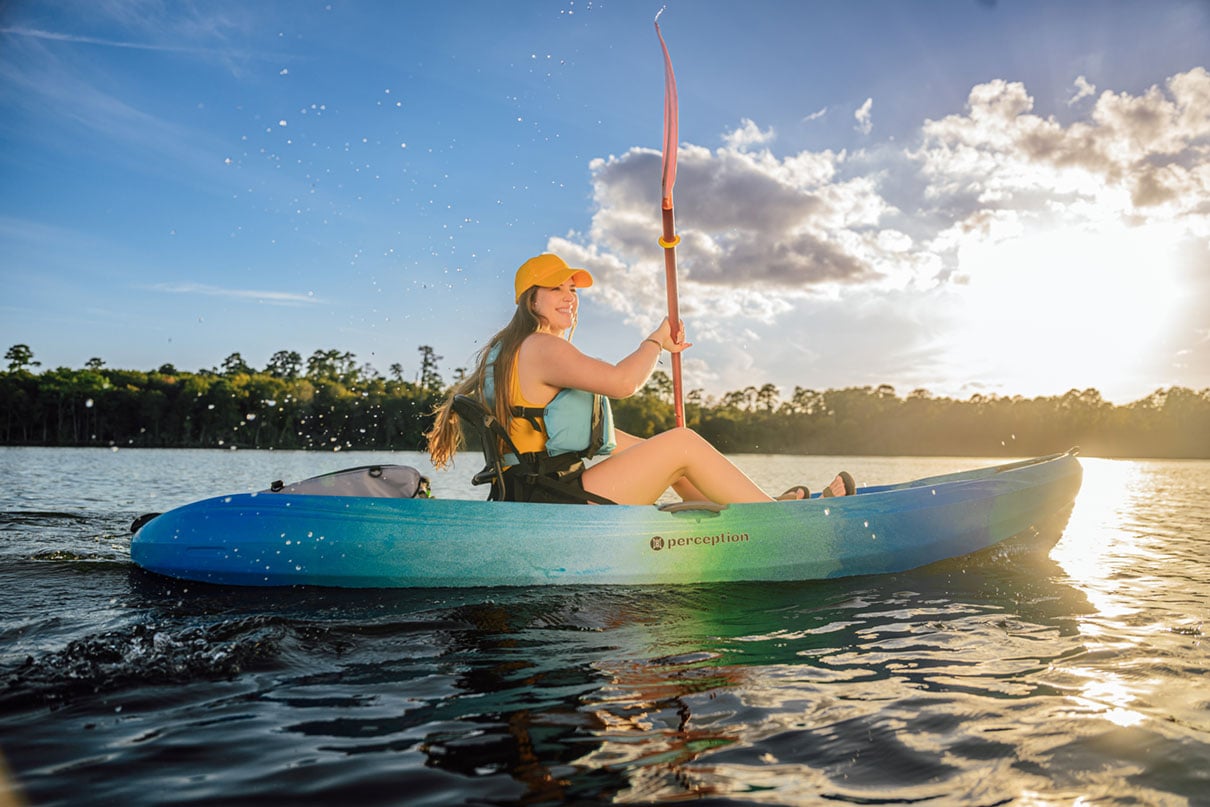
Sit-on-top kayaks
There are sit-on-top kayak designs for every type of paddling activity, whether it be recreational, touring, whitewater, fishing and even racing.
There are two main advantages to sit-on-top kayaks. First, they won’t fill with water if flipped over. This makes them easier to get back onto in deep water and is one of the reasons sit-on-tops are a good choice for a recreational kayak that you plan to paddle far from shore.
Second, they are easy to move around within, whether you are turning around to grab a fishing rod or getting onto them at the beach. Almost all fishing kayaks today are sit-on-top designs for this reason.
If you’re paddling a sit-on-top in cold water you might get wet and cold. This is the biggest disadvantage of sit-on-top designs. Another is that sit-on-tops tend to be heavier than similar kayaks with a cockpit. Because you are not enclosed, with your thighs secured, there all also limits to the types of maneuvers you can do in a sit-on.
Sit-on-tops are an excellent choice for recreational paddlers who paddle farther from shore, anglers who want a versatile kayak for fishing, and for anyone who gets into high-performance surf ski racing.
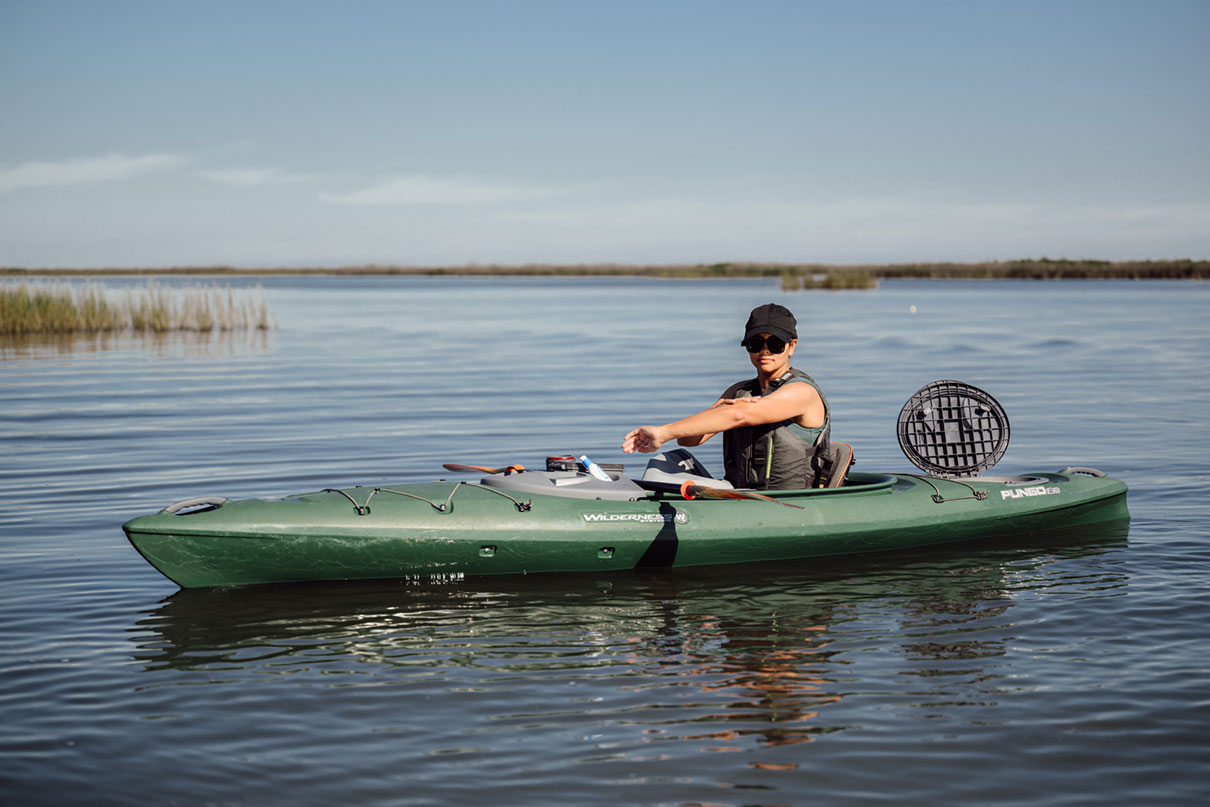
Sit-inside kayaks
The most common type of kayak, or type we often envision, is a sit-inside or sit-in kayak.
The biggest advantage to sit-inside kayaks is they can be sealed off from the elements with a sprayskirt. This means they are warmer and drier to paddle in cool weather or on cold water. A closed cockpit can do anything from seal out a light drizzle to protect a paddler from smashing surf or turbulent whitewater—it just depends on the design.
Sit-inside recreational designs are found everywhere and are a good option for paddling close to shore on calm water. Longer touring designs are faster and frequently have safety features that come into play for open-water touring or camping. Whitewater designs will run steep drops or surf a river wave. For advanced paddlers, sit-in kayaks in touring and whitewater have performance advantages beyond sealing water—by having your legs secured inside the kayak, you’re able to perform moves like a roll to right yourself. Sit-insides also tend to be lighter because of their hollow structure.
The biggest disadvantage of sit-inside designs is they can be tricky to get back into if you fall out in deep water. Sea kayakers need to learn special skills to get back in their kayaks. Whitewater kayakers learn to roll their kayaks to avoid swimming through rapids. The possibility of a capsize and how far you’ll be traveling from shore, is something recreational paddlers will want to take into consideration.
Kayaks by construction
Kayaks are produced in a variety of materials. There are pros and cons to each, and which you choose usually depends on budget and what attributes are most important to you.
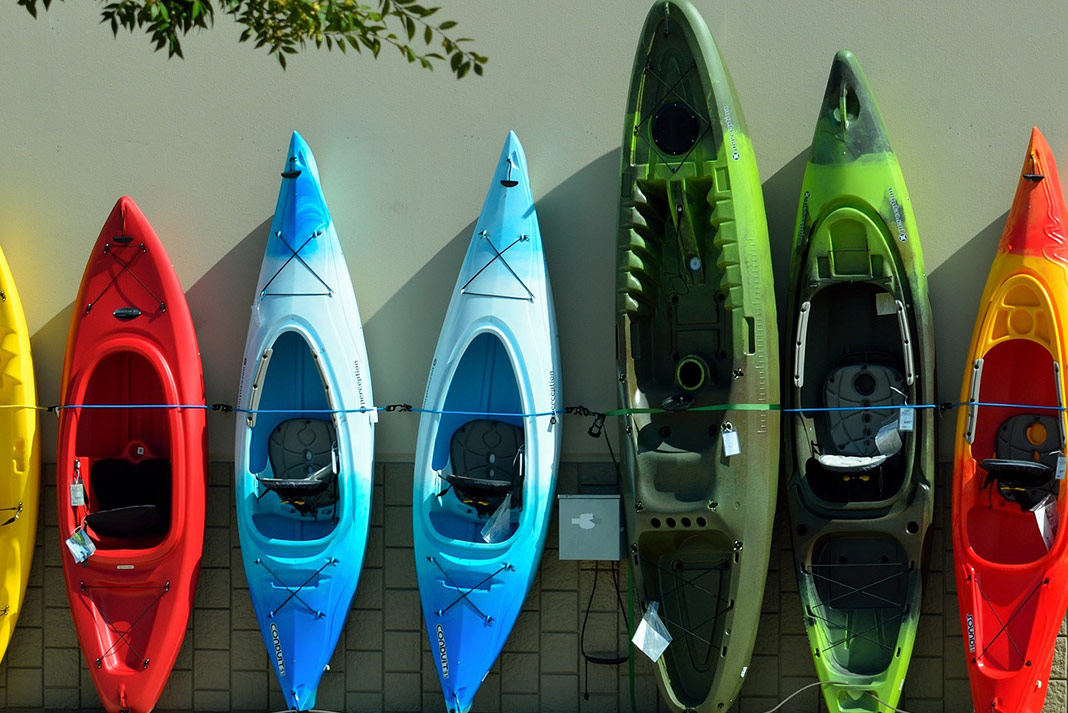
Rigid or hard-shell kayaks
The largest category of kayaks is rigid or hard-shell kayaks. There are hundreds of designs on the market in a wide range of materials, from rotomolded and blow-molded plastic kayaks to thermoformed ABS plastic kayaks to composite constructions. The one thing all these constructions have in common is that they are a “rigid” construction. They don’t fold up, they don’t roll into bags, and (for the most part) they don’t come apart into pieces.
Hard-shell kayaks are where you should start your exploration. Most people who purchase kayaks will find a hard-shell design that matches their needs, whether they’re looking for a fishing kayak, a lightweight recreational design or something for serious ocean exploration. Nearly every category of kayak design is dominated by some sort of rigid design, whether it be fishing kayaks, recreational boats, whitewater designs or touring kayaks.
Rigid kayaks differ in both design and materials. Here we’ll focus on the differences between rotomolded, blow-molded, ABS/thermoformed and composite constructions.
Rotomolded polyethylene
Rotomolded polyethylene (PE) is the most common material for rigid kayaks. It’s durable and particularly impact-resistant, which is why nearly all whitewater kayaks are rotomolded. Rotomolding can be used to create an almost infinite range of kayak designs. The toughness of the material makes it a good choice for many paddlers, as does its modest cost.
The biggest downside of rotomolded kayaks is they tend to be heavier than boats made from other materials. Rotomolded boats are also a little more flexible than composite designs, so the material isn’t quite as good for high-performance designs like racing kayaks and sea kayaks.
Blow-molded
Blow-molded plastic kayaks are often the least expensive and least durable designs. A handful of high-quality manufacturers make heavy-duty blow-molded kayaks, but most of the blow-molded designs you’ll find are economy models sold at department stores and mass merchant retailers. These blow-molded kayaks are lightweight and inexpensive, but are much less durable than rotomolded plastic designs.
Composite
Composite kayaks are made from layers of fiberglass, aramid, or carbon fiber laminated together with varying types of resin. Each composite material provides varying attributes and costs. In general, composite kayaks are lighter and stiffer than rotomolded designs. This makes composite a good choice for longer touring kayaks. Composites are also the best choice for a kayak that is ultra-lightweight or the most high-performance.
ABS
ABS plastic kayaks fill a middle ground between rotomolded PE designs and composites. They cost more than rotomolded boats but less than composites, and they’re roughly in between the two materials in terms of stiffness and impact resistance. Many light touring and touring designs are built in this material and offer excellent value.
The one category of kayaks you’ll rarely find in hard-shell designs are folding or collapsible models. There are some rigid kayaks that come apart into two or more pieces for transportation or storage, but the category of travel kayaks is dominated by inflatable and folding designs.
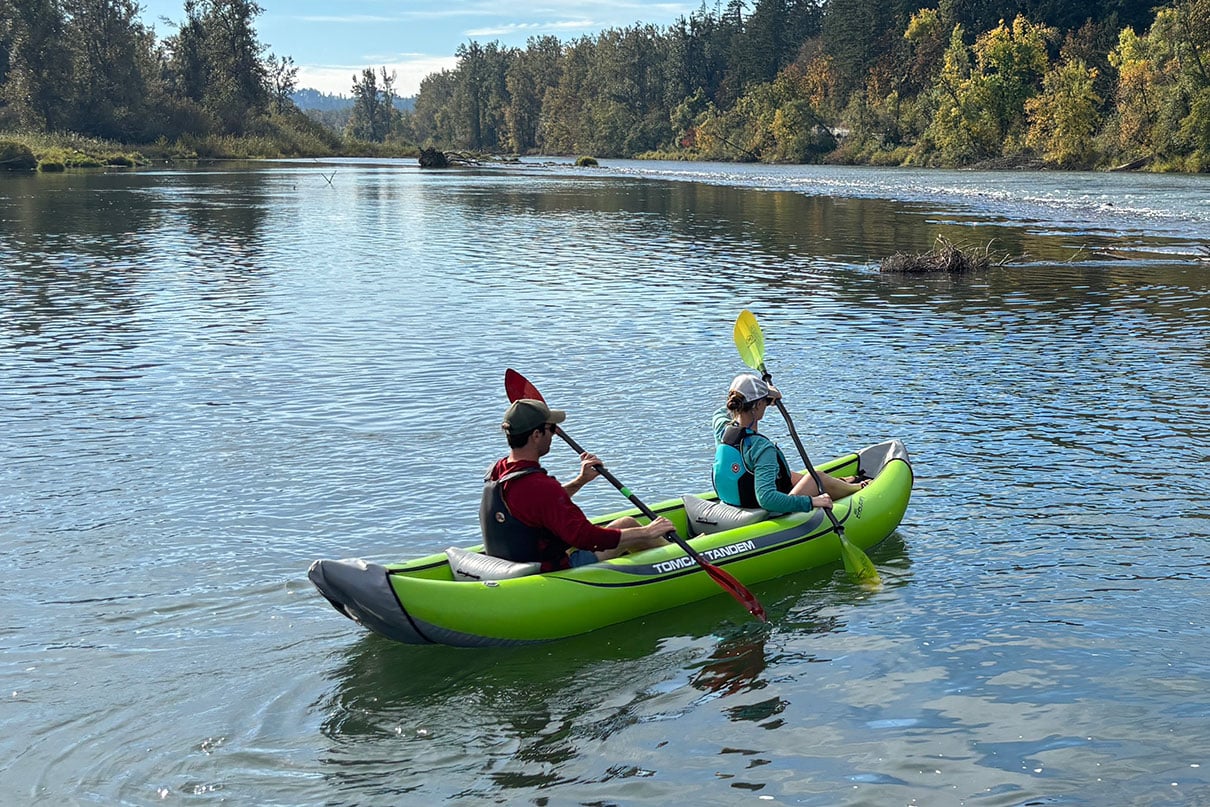
Inflatable kayaks
Inflatable or blow-up kayaks are a good option for kayakers with limited space to store their boats, as well as those seeking stability and ease of floating along over performance. Inflatables are constructed of rubbery materials that hold air to provide their structure.
Inflatables typically come in whitewater, fishing and recreational designs, but there are some also geared toward touring. Whitewater and fishing inflatables are usually made from tough materials similar to those used in whitewater rafts. Recreational designs use lighter materials and are usually a little less durable but more affordable.
Whitewater inflatable kayaks offer an option between rafts and whitewater kayaks for paddlers looking to explore wild rivers. Recreational designs are suitable for quiet water adventures. Both are available in solo or tandem designs.
The chief advantage of inflatable designs is their compactness for storage and travel. They also offer some of the best stability of any kayak type because of the pontoon-like design of the tubes. This makes an inflatable something just about anyone can hop in and use, especially to float down a stretch of mild whitewater. Another advantage is that they can be among the most affordable options in collapsible kayaks.
A disadvantage to inflatable kayaks is that they are much less rigid than hard-shell designs, so they don’t perform quite as well. They also offer fewer design options and features than rigid kayaks, but if you’re looking for a kayak to store in your closet or a tough boat to bomb down the river, they’re a great option to consider.
It also shouldn’t be overlooked that even durable inflatables can be punctured. Many have multiple air chambers so you can make it to shore for a repair, nonetheless, this should be acknowledged.
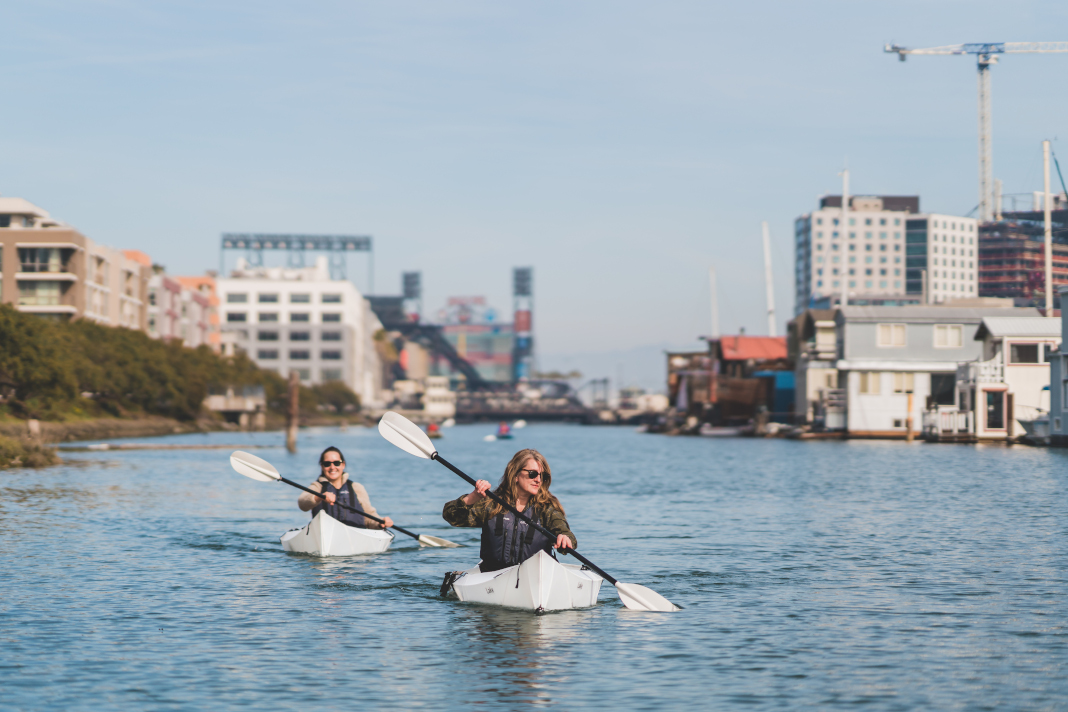
Folding kayaks
Folding or foldable kayaks typically offer the most high-performance options in collapsible kayak designs. Traditional folding kayak designs use a rigid frame covered by a flexible waterproof skin. Some newer designs use folding plastic panels that form the hull of the kayak when snapped together. Either option creates a hull that is stiffer than an inflatable and in some cases approaches the performance of high-end hard-shell touring designs.
Folding kayaks come in recreational and touring designs. They are often wide and stable, particularly tandem folding designs.
The biggest advantage of folding kayaks is they offer a compact option for storage and travel. Folding kayaks are more expensive than inflatable options but typically offer superior performance on the water. Because of their rigid design, folding kayaks are a poor choice for whitewater paddling where impacts with rocks could bend or break their frames.
If you’re looking for a compact kayak for storage or travel, and an inflatable would not be suitable, folding designs should be at the top of your list.
Types of kayaks by number of seats
Another factor you’ll want to consider from the outset is whether you’d like a solo or tandem kayak. Solo kayaks are perhaps the most widely used, however depending on your circumstances, there can be benefits to either.
Solo kayaks
Solo kayaks or one-person kayaks are the most common type of kayaks sold. The advantage of a solo kayak is that only one person is needed to go out on the water. Many kayakers prefer solo kayaks because they can choose their own course and pace. Solo kayaks are lighter than similar tandem kayaks and less expensive.
Tandem kayaks
Tandem kayaks, two-seater kayaks, two-person kayaks—there are many ways to describe them, but the basic idea is the same. Two people in one boat. There are tandem versions of all the different types of kayaks, from recreational to touring and even racing. Some tandems can be paddled solo, while others have separate cockpits and are best used by two people. A single tandem kayak usually costs less than two solos, but is heavier to carry and can be more challenging to transport. One of the biggest advantages of tandem kayaks is they allow two paddlers of different skill levels or strength to stay together on the water.
Types of kayaks by propulsion
Believe it or not, there is more than one way to make a kayak go. While paddling is the traditional method of human-powered propulsion, there are a growing number of pedal and motorized kayaks. Different types of propulsion make kayaking accessible to more people, and also have significant benefits in sectors of the sport like fishing.
Paddle kayaks
The most common way to propel a kayak is with a two-bladed kayak paddle. Just about any kayak on the water can be paddled this way, as long as you use a paddle that is correctly sized to the boat. Wider kayaks require longer paddles, narrower kayaks use shorter paddles. Different styles of kayaks perform better with different types of paddles, but one thing is universally true—a lightweight paddle makes paddling your kayak much more enjoyable and is a worthwhile investment.
Pedal kayaks
Some kayaks come with pedal-drive systems that allow them to be propelled using your legs rather than arms. Since the leg muscles are stronger than those in the upper body, pedal-drive kayaks can be less fatiguing to use. Pedal-drives are primarily found in recreational kayaks, particularly fishing kayaks. Pedal-drive kayaks allow you to keep your hands free for fishing, which is a big advantage when you’re trying to cast and hold position.
Pedal kayaks can develop a lot of power and many anglers prefer them when fishing water with currents, where they can be used to hold the kayak in position without setting an anchor. Pedal-drive kayaks have lots of advantages, but they do tend to be more expensive than similar sized recreational kayaks. The largest pedal kayaks can also be quite heavy.
Motorized kayaks
Motorized kayaks are similar to pedal-drive kayaks but power is provided by a marine battery rather than the kayaker’s legs. Motor drives are frequently offered as an add-on option for pedal-drive kayaks, or as a kit to fit onto a conventional recreational or fishing kayak. A motor moves the kayak swiftly through the water and eliminates any need to paddle or pedal. Motors do add complexity and cost to a kayak and marine batteries require charging, but some anglers find the hands-free power of motors to be a worthwhile investment.
Types of kayaks by audience
Kids’ kayaks
Kids’ kayaks, youth kayaks or child’s kayaks can be found in a range of styles and designs. There are fewer choices in youth kayaks than there are for adults, but if you look into the options you’ll find whitewater kayaks, touring kayaks, sit-on-tops and recreational kayaks sized smaller to fit children. Oftentimes children’s kayaks are simply smaller versions of similar adult boats. In this case, you should expect them to come at similar prices.Other children’s kayaks are stripped down to the basic features in order to keep them affordable. Regardless of what type of kayaking you enjoy, you’ll likely find a child-sized option to help you get out on the water with the whole family.
Touring kayaks are made to cover ground, especially on open waterways. They are constructed of every material from plastic to composites. Their elongated, narrower shapes are made to track in a straighter line and carry more speed than other types of kayaks. | Feature photo: Kaydi Pyette


